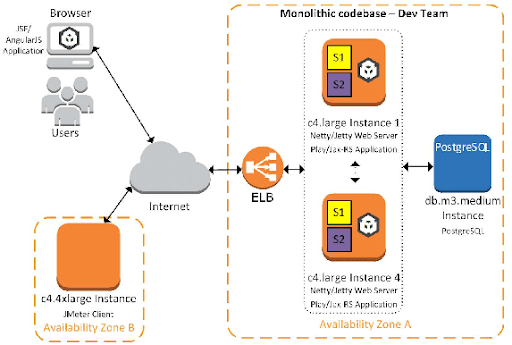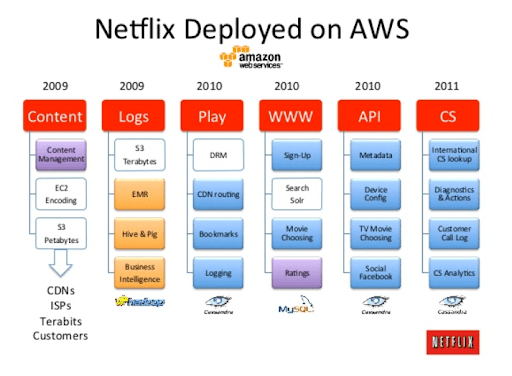
Users of mobile devices are quickly replacing desktop computers as their preferred means of Internet browsing. We are currently witnessing tremendous growth in consumer expectations, which compels, including the innovation of the mobile experiences you provide, with market leaders focusing on delivering customers with great user experiences. A mobile-first strategy alone is no longer sufficient.
The incorporation of “Microservices” is one of the newest methods for accelerating the development of mobile apps. Providing essential flexibility in mobile app development, it enables the development teams to take ownership of the whole project development cycle. Additionally, it gives your company apps speed, promptness, and originality.
The future of software development lies in microservices. With this method, services remain connected yet operate separately from one another as a server-side solution to development. Microservices are being used by more developers to increase performance, accuracy, and productivity, and analytical tools give them useful information on performance and service levels.
Microservices are the best approach to accomplish these goals in the contemporary app consumer environment, where reliability and speed are crucial. In 2021, 37% of firms had partially implemented microservices, making up about 71% of all organizations. The strategy requires additional structure, complexity, and monitoring systems, but the payoff is worth it.
In this guide, we will take a close look into microservices by learning their meaning, what they do and how they benefit the overall app development process.
What is Microservices Exactly?
Microservices are software development methodologies that are service-oriented. The big applications in this case are broken up into loosely connected, smaller services. Each microservice concentrates on a separate line of business.
These microservices can be individually installed, changed, and reinstalled without compromising the uniqueness of the program. The smaller, loosely connected services speed up the development process. Additionally, because each microservice is a separate entity within the software development projects, the failure of one microservice does not affect the overall functionality of the app.
RedHat’s research indicates that 69% of clients favor the microservices approach for both new projects and ongoing app development workflows.
What Is Microservice Architecture?
Over the past few years, the term “Microservice Architecture” has gained popularity to describe a particular method of structuring software systems as collections of services that can be deployed separately from one another.
Although this architectural style cannot be exactly described, it does have some traits in common with other architectural strategies. These include language and data decentralization, automated deployment, endpoint intelligence, and organization based on business capacity. To put it another way, microservices’ ability to function independently is what propels them to the top of the software development food chain.
Example

Source: Researchgate
- For instance, Amazon previously worked on a monolithic structure, necessitating extreme caution when updating operations to prevent system failure.
- Amazon hired experienced resources to work on the codes as the need for this program grew over time, leading to a rise in complexity. Increasing the consumer base and meeting the demand, presented numerous problems.
- Amazon finally broke down its complex jobs into smaller copies of specific tasks, such as separate scripts for buying alternatives and tax calculations, to address this issue.
- To increase operational efficiency, a team of developers was to oversee each of these divisions independently. Establishing microservices architecture includes all of this.
- Amazon now creates the program for other businesses as well. Similar to how Netflix and Uber made their way toward the microservices design, they did so to run their businesses effectively and resolve the issues associated with using the previous monolithic structure.
How Microservices Transform App Development?
The demand for microservices will rise significantly shortly. The updating of legacy programs is done via microservices. Monolithic apps can be separated into microservices by refactoring.
This results in the gradual modernization of out-of-date software and is preferable to starting from scratch with microservices to construct the product. A microservices design could be quite advantageous for application development. Here are some of its main advantages:
Faster Development: Monolithic apps are fundamentally simpler to design because of this. Monolithic app development is fairly simple because everything is in one location and they frequently employ old systems. You build, test, deploy, troubleshoot, and then scale as necessary.
Less Development Effort: Because it uses distributable development, it allows for the concurrent creation and development of numerous microservices, which means an increasing number of developers will be able to work on a single service at once, shortening the time required for its development.
Allow the Use of Multiple Technologies: Developers are free to select the tools that are most effective for each service because each microservice can be created in its language. Microservices in many languages can also collaborate.
Every user can customize the application. There is always room for improvement and change. Because this design may be used by individuals who speak multiple languages, more developers can utilize it. It is also simple to alter.
No Downtime: A monolithic application means that if one component fails, the entire application will also fail. Each service is independent of the others when using microservices. This means that even if one service encounters a problem, the others will still function. The application as a whole experiences less downtime as a result. It is also possible to carry out updates and upgrades without bringing the entire application offline.
Constant Deployment: The cross-functional teams began managing the whole lifecycle of the mobile app in a continuous delivery paradigm after the integration of microservices. Continuous iterations involve QA Testers, Developers, and the Operational Unit working as a team on the development, testing, individual services, and debugging. As a result, code is continuously produced, tested, and deployed while also providing pertinent feedback.
Popular Names That Have Paved for Using Microservice Architecture
More and more businesses are relying on microservice architecture to adhere to standards and advance in today’s fast-paced business climate, which is always changing due to shifting stakeholder and customer needs. In the next subheading, we provided instances of businesses where the use of microservices is prevalent.
Netflix

Source: Slideshare
In 2009, one of the first well-known brands to accomplish this was Netflix. Netflix made the decision to begin moving their application from a typical monolithic architecture to a more distributed microservices architecture before microservices were even a “thing.” They have two goals in mind:
- To improve the scalability of the application
- To improve its ability to add new features
Netflix had to manage massive volumes of user data due to its millions of customers. With assistance from Amazon Web Services, they transitioned to microservices while simultaneously moving to a cloud-based computing strategy.
Spotify
In order to scale to millions of users, support numerous platforms, and manage complicated business regulations, Spotify was looking for a solution by the time it had 75+ million active users per month.
More than 810 services are currently active on Spotify. By decoupling its old system, Spotify was able to create adaptable structures that are simple to scale, quickly address bottlenecks in the real world, test quickly, and independently version various solutions. Moreover, they grew less vulnerable to significant failures.
Learn more about microservices at Spotify here.
Uber
Like many other names, Uber’s business model has compelled many entrepreneurs to transform their businesses. The industry leader in ride-sharing, Uber, began modestly with a monolithic application that supported its primary purpose of matching drivers and passengers.
But they quickly realized that their monolithic application would not be able to support their growth as they quickly entered new markets and introduced new features. Uber switched to microservices in 2014, spurred on by behemoths like Netflix and Amazon, and hasn’t looked back since. Their program now supports more than 93 million active users globally and more than 2200 critical microservices.
Before You Leave
Recently, the impact of microservices on software development has been tremendous. Teams now have a more efficient way to build, manage, deploy, and scale a variety of apps via the cloud thanks to this substitute for the monolithic architectural model that long predominated software development. These operations are facilitated by platforms like AWS and Azure.
The major issues that the international players mentioned above had with the development and scalability of their IT systems were handled. They also gained developers’ involvement, adaptability, and durability at the same time. They might combine legacy software with modern technology using microservices, which would also make learning easier and draw in a newer generation of developers to collaborate with them on innovative projects.
For other businesses that are now stepping into the world of microservices, the experience that these major organizations obtained was a crucial turning point and lesson.
If you are considering developing a robust and scalable application, contact us as a mobile app development company. Our team of developers will be more than happy in designing amazing products to solve your business’s current issues.










